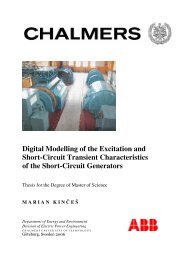Modeling and Simulation of Vehicular Power Systems - webfiles its ...
Modeling and Simulation of Vehicular Power Systems - webfiles its ...
Modeling and Simulation of Vehicular Power Systems - webfiles its ...
Create successful ePaper yourself
Turn your PDF publications into a flip-book with our unique Google optimized e-Paper software.
Where• I = discharge current [amp]• n = battery constant (n=1.35 for typical lead-acid batteries)• T i = time to discharge at current I [seconds]• C= theoretical capacity <strong>of</strong> the battery [ampere hour]Equation 5-1 shows that at higher currents, there is less available energy in the battery.The Peukert Number is directly related to the internal resistance <strong>of</strong> the battery. Highercurrents mean more losses <strong>and</strong> less available capacity. The value <strong>of</strong> the Peukert numberindicates how well a battery performs under continuous heavy currents. A value close to1 indicates that the battery performs well; the higher the number, the more capacity is lostwhen the battery is discharged at high currents. The Peukert number <strong>of</strong> a battery isdetermined empirically. For Lead acid batteries the number is typically between 1.3 <strong>and</strong>1.4.Figure 5-1 shows that the effective battery capacity is reduced at very high continuousdischarge rates. However with intermittent use the battery has time to recover duringquiescent periods when the temperature will also return towards the ambient level. Due tothis potential for recovery, the capacity reduction is less <strong>and</strong> the operating efficiency isgreater if the battery is used intermittently as shown by the dotted line. Note that this isthe reverse <strong>of</strong> the behavior <strong>of</strong> an internal combustion engine which operates mostefficiently with continuous steady loads. In this respect electric power is a better solutionfor delivery vehicles which are subject to continuous interruptions.Figure 5-1 Peukert curve <strong>and</strong> capacity change <strong>of</strong> battery versus discharge current5.1.2 Battery capacity <strong>and</strong> discharge currentThe Peukert relationship can be written to relate the discharge current at one dischargerate to another combination <strong>of</strong> current <strong>and</strong> discharge rate:25




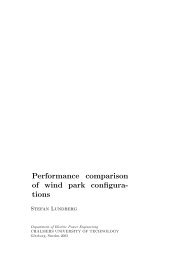
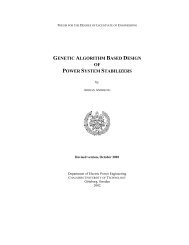

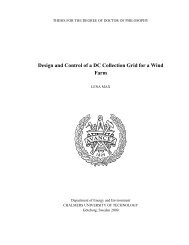

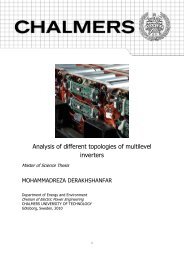

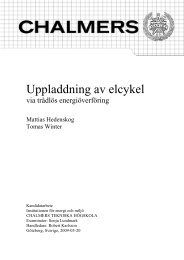

![LAPLACE OPERATOR.ppt [Lecture seule]](https://img.yumpu.com/42909900/1/190x135/laplace-operatorppt-lecture-seule.jpg?quality=85)

